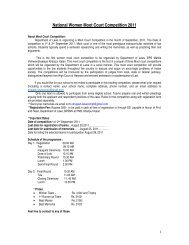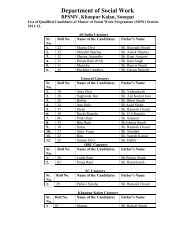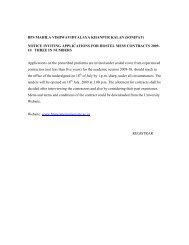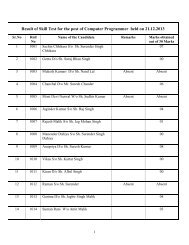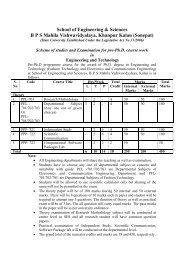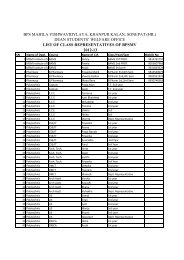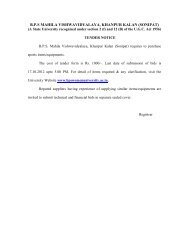Ordinance and Syllabus - Bhagat Phool Singh Mahila ...
Ordinance and Syllabus - Bhagat Phool Singh Mahila ...
Ordinance and Syllabus - Bhagat Phool Singh Mahila ...
Create successful ePaper yourself
Turn your PDF publications into a flip-book with our unique Google optimized e-Paper software.
Paper Code: BPL 203 Pharmaceutical Chemistry-IV (Pharmaceutical Analysis-I)L -- T -- P Total Credits: 044 -- -- Total Marks: 100External Marks: 50Internal Marks: 50Paper Objectives: Analysis of Pharmaceuticals play a very important role in industry as itrelies upon both qualitative <strong>and</strong> quantitative chemical analysis to ensure that the raw materialused meets Pharmacopoeial specifications <strong>and</strong> also ensures a quality of finished product inTerms of proportion of components.UNIT IIntroduction: Significance of quantitative analysis in quality control, differenttechniques of analysis, significant figures, rules for retaining significant digits, typesof errors, mean deviation <strong>and</strong> st<strong>and</strong>ard deviation, precision <strong>and</strong> accuracy,fundamentals of volumetric analysis: law of mass action, activity <strong>and</strong> activitycoefficient, pH, buffers, method of expressing concentration, primary <strong>and</strong> secondaryst<strong>and</strong>ards.Neutralization Titrations: Acid base concepts, strength of acids <strong>and</strong> bases,hydrolysis of salts, ionic product of water, neutralization curves, neutralizationindicators, theory of indicators, choice of indicators, mixed indicators. Analysis ofboric acid, mixture of sodium carbonate <strong>and</strong> bicarbonate.UNIT IINon-aqueous Titrations: Theory of non-aqueous titrations, titration of alkali metalsalts of organic acids, titration of amines <strong>and</strong> amine salts of organic acids, titration ofhalogen acid salts of bases <strong>and</strong> titration of acidic substances.Oxidation Reduction Titrations: Concepts of oxidation <strong>and</strong> reduction, redoxreactions, strength <strong>and</strong> equivalent weights of oxidizing <strong>and</strong> reducing agents. Theoryof redox titrations, General principles of potassium permanganate titrations,potassium dichromate titrations potassium iodate titrations, potassium bromatetitrations, cerric sulphate titrations <strong>and</strong> iodometric titrations. Analysis of ferroussulphate, hydrogen peroxide, potassium bromide, ascorbic acid, sodium thiosulphate,copper sulphate, phenol, sodium sulphite.UNIT IIIPrecipitations Titrations: Precipitation reactions, common ion effect, solubilityproduct, effects of acids, temperature <strong>and</strong> solvent upon the solubility of a precipitate.Determination of end points in precipitation titrations by Mohr’s method, Volhardsmethod <strong>and</strong> Fajans method.Gravimetry: Introduction, precipitation methods, the colloidal state, supersaturation,co-precipitation, post-precipitation, conditions of precipitation, precipitation fromhomogeneous solution, precipitation reagents, washing <strong>and</strong> ignition of the precipitate.Determination of nickel as dimethylglyoximate <strong>and</strong> aluminium as 8-hydroxyquinolate.48



